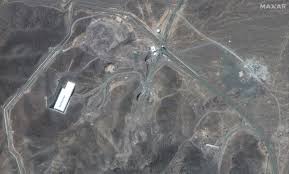
Breaking News
 Widow of killed fire chief not satisfied with Secret Service suspensions...
Widow of killed fire chief not satisfied with Secret Service suspensions...
 Gunman leaves multiple injured at church after shooting cop at Kentucky's Blue Grass Airport
Gunman leaves multiple injured at church after shooting cop at Kentucky's Blue Grass Airport
 One year later: White House highlight Trump's legacy on anniversary of assassination attempt
One year later: White House highlight Trump's legacy on anniversary of assassination attempt
 Arizona homeowner fined by petty HOA for act of kindness during extreme heat
Arizona homeowner fined by petty HOA for act of kindness during extreme heat
Top Tech News
Magic mushrooms may hold the secret to longevity: Psilocybin extends lifespan by 57%...
 Unitree G1 vs Boston Dynamics Atlas vs Optimus Gen 2 Robot– Who Wins?
Unitree G1 vs Boston Dynamics Atlas vs Optimus Gen 2 Robot– Who Wins?
 LFP Battery Fire Safety: What You NEED to Know
LFP Battery Fire Safety: What You NEED to Know
 Final Summer Solar Panel Test: Bifacial Optimization. Save Money w/ These Results!
Final Summer Solar Panel Test: Bifacial Optimization. Save Money w/ These Results!
 MEDICAL MIRACLE IN JAPAN: Paralyzed Man Stands Again After Revolutionary Stem Cell Treatment!
MEDICAL MIRACLE IN JAPAN: Paralyzed Man Stands Again After Revolutionary Stem Cell Treatment!
 Insulator Becomes Conducting Semiconductor And Could Make Superelastic Silicone Solar Panels
Insulator Becomes Conducting Semiconductor And Could Make Superelastic Silicone Solar Panels
 Slate Truck's Under $20,000 Price Tag Just Became A Political Casualty
Slate Truck's Under $20,000 Price Tag Just Became A Political Casualty
 Wisdom Teeth Contain Unique Stem Cell That Can Form Cartilage, Neurons, and Heart Tissue
Wisdom Teeth Contain Unique Stem Cell That Can Form Cartilage, Neurons, and Heart Tissue
 Hay fever breakthrough: 'Molecular shield' blocks allergy trigger at the site
Hay fever breakthrough: 'Molecular shield' blocks allergy trigger at the site
Israeli officials warn Iran's underground uranium stockpile survived U.S. strikes...

A chilling admission from Israeli officials has revealed that portions of Iran's near weapons-grade enriched uranium survived last month's U.S.-Israeli bombing campaign against Tehran's nuclear facilities. While Iran's centrifuges at Natanz and Fordow sustained some damage, underground uranium stockpiles at Isfahan may still be accessible, raising the specter of a renewed nuclear threat from the Islamic Republic.
The revelation comes amid conflicting assessments from U.S. and Israeli intelligence agencies. President Trump has publicly insisted that the strikes "obliterated" Iran's nuclear program, but Israeli officials now acknowledge that some of the uranium—enriched to 60% purity, just shy of weapons-grade—remained intact in underground storage facilities following the 12-Day War in June. Although Iran admitted the bombings caused "excessive and serious" damage, the survival of its uranium stockpile suggests Tehran's nuclear ambitions may not be fully extinguished.
Iran's buried uranium may still be reachable
According to a senior Israeli official who spoke anonymously to The New York Times, the U.S. bunker-busting bombs were unable to fully penetrate the deep storage sites at Isfahan, leaving portions of Iran's uranium cache buried but likely retrievable. Satellite imagery reviewed by intelligence analysts showed trucks departing Fordow in the days preceding the attack, sparking speculation that Iran had moved uranium to other undisclosed locations. However, Trump claimed nothing was removed, arguing that the Iranians were instead reinforcing the site with concrete in a futile defense effort.
While Rafael Grossi, director of the International Atomic Energy Agency (IAEA), suggested that Iran may have relocated uranium before the strikes, Israeli intelligence disputes this claim. Their assessment warns that any attempt by Tehran to recover the remaining stockpile would likely be detected, prompting further military action.
David Albright, a U.S. weapons expert, believes Iran is already conducting engineering surveys of the damage at Fordow, possibly preparing to resume enrichment activities.
The Israeli official described an alarming acceleration in Iran's nuclear ambitions following the assassination of Hezbollah leader Hassan Nasrallah last fall. Intelligence reportedly indicated that Tehran considered transferring a nuclear weapon enriched to 90% purity to Yemen's Houthi rebels for potential use against Israel. Such a move, if true, would confirm fears that Iran's regime is actively pursuing a deliverable bomb despite international sanctions and military deterrence efforts.

 AI Getting Better at Medical Diagnosis
AI Getting Better at Medical Diagnosis

